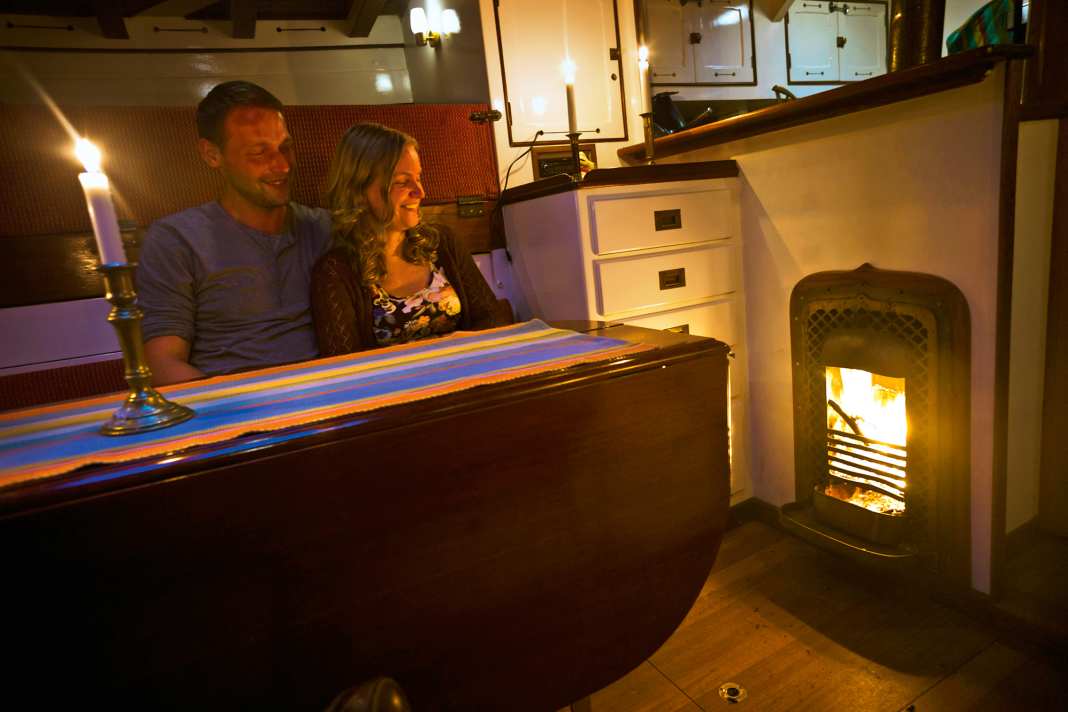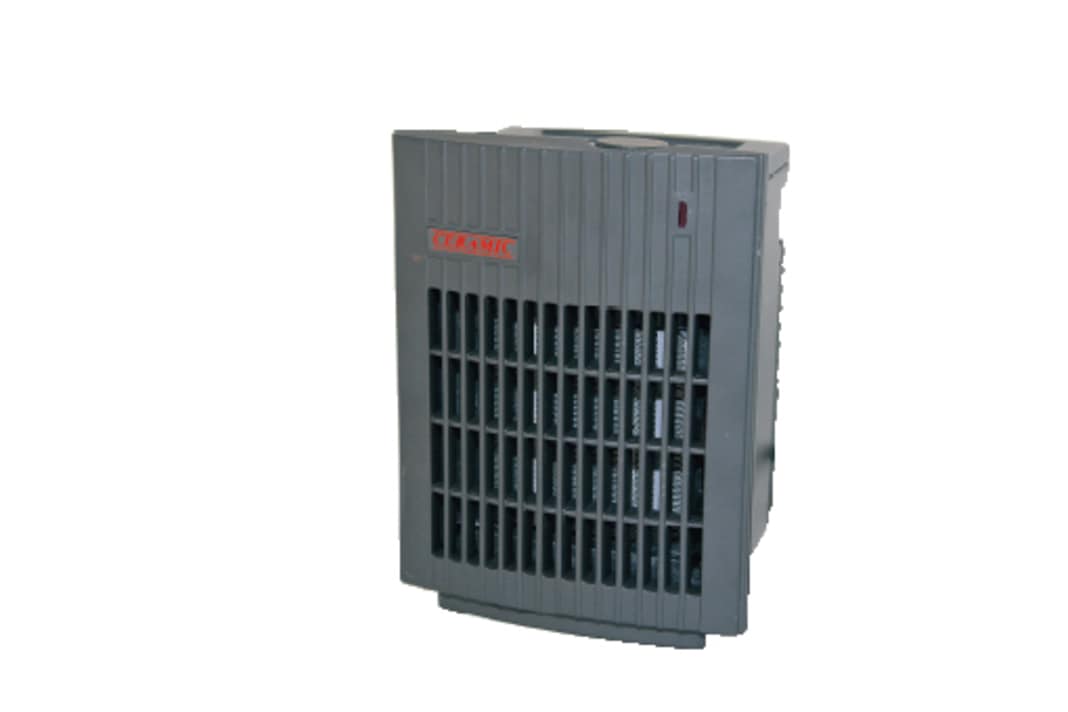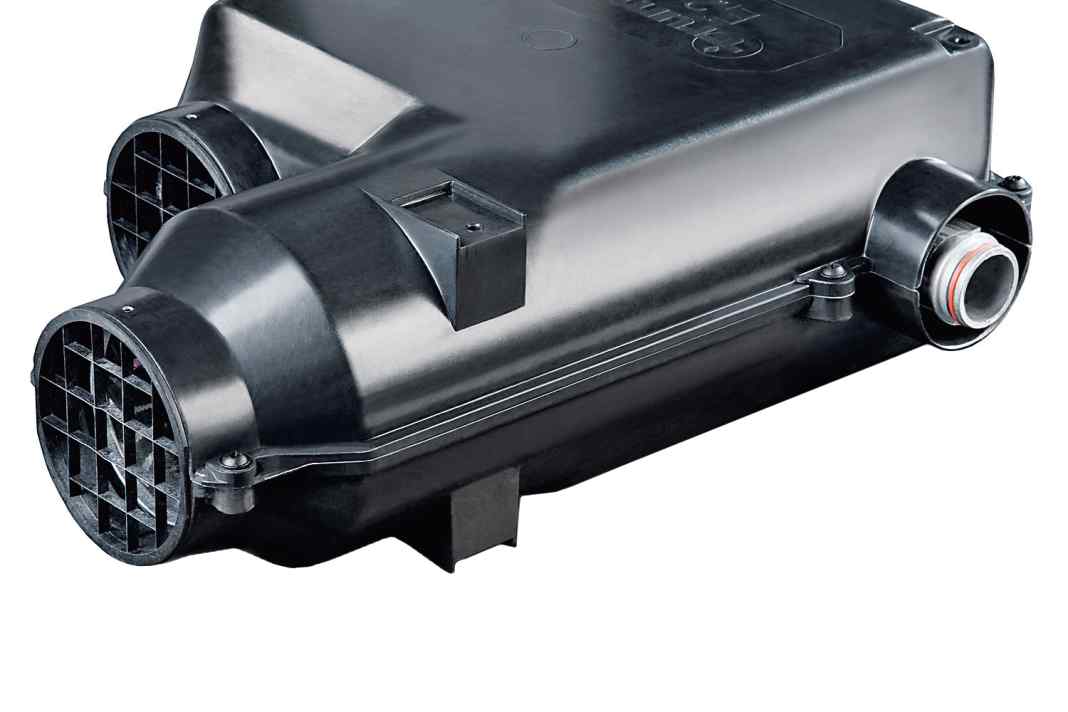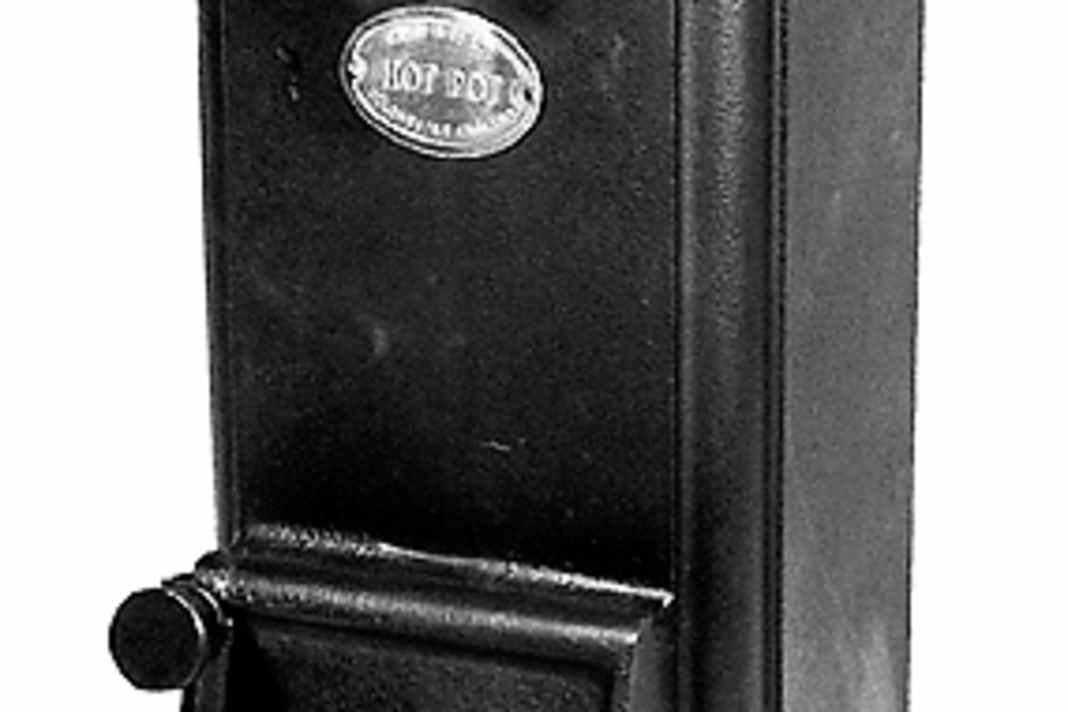





Who likes getting up early in the morning? But on a boat in the cooler months, it can be torture if there is no heating. Once you've peeled yourself out of your cosy sleeping bag, you're out in the damp cold. Stretching sleepily, you come up against a cabin ceiling damp with condensation, and shivering, you hurry to put on your clammy clothes. Have the clothes dried overnight? No. The coffee tastes only half as good at the prospect of getting into wet clothes after breakfast. But does that mean you should give up boating in April or May? Or even when it gets cool and wet again in summer? That's out of the question, of course. So a heater is needed; it helps to extend the season and dries the boat even on cool summer days.
What options are there for heating the boat? The options range from simple wood-burning stoves to complex, fully automated systems that not only heat all cabins, but also supply hot water for the morning shower. The various solutions differ in terms of the space required for installation, the fuel used, the complexity of the installation and the mode of operation. The potential dangers that can emanate from a heating system should also be taken into account.

Mobile heaters
Mobile, handy heat sources such as fan heaters, paraffin burners and oil radiators are popular on smaller boats.




Fan heater
Fan heaters are available from as little as 25 euros and can heat small boats quickly. However, this is only possible with 230 volt shore power, and even then caution is advised - not all harbours have high enough fuse protection for the sockets on the jetty. After all, a fan heater has an output of around 1.5 kilowatts on the highest setting. Advantage: Without combustion, there is no need to ensure adequate ventilation. Some models switch off automatically if they tip over. Nevertheless, they should not be left running unattended.
- + Small and handy
- + Simple operation
- - Can only be used in the harbour, even then with restrictions
Oil radiator
Oil radiators are available from 50 euros. They are small radiators that are powered by electricity and have a large contact surface with the surroundings due to their shape. This means that the surface does not have to be as hot as with fan heaters, for example, so there is no risk of fire if they are covered. However, as with fan heaters, they only work with shore power, and even then up to 2.5 kilowatts is usually too much for the electrical installation on the jetty. They are also relatively bulky.
- + Easy handling
- + Safe due to large surface area and low heat
- - Can only be used in the harbour, even then with restrictions
Petroleum heating
The advantage of paraffin heating is that it does not require electricity, so it can also be used when travelling or at anchor. However, it is all the more important to ensure that the cabin is well ventilated, as oxygen is consumed during combustion and carbon dioxide (CO2) is produced. If the CO2 content of the air rises, this is dangerous for the crew. It also has a detrimental effect on combustion and can produce highly dangerous carbon monoxide (CO). This has a higher affinity than oxygen to bind to red blood cells, with the result that even the smallest amounts can be fatal. However, boaters will ensure good ventilation because a paraffin heater tends to smell unpleasant when in operation.
There are also mobile heaters with gas cartridges. Some of these are equipped with oxygen sensors and are therefore safer to operate. However, paraffin and gas are comparatively expensive fuels.
Also interesting:
The general problem with these appliances is that heating the cabin does not actually make it dry. On the contrary: the combustion process also produces water, which cannot escape to the outside without a chimney. Ventilation and thus a constant flow of cool air is therefore essential, and not just for safety reasons.
Mobile paraffin heaters are available from 35 euros. In principle, they do not differ significantly from the paraffin lamp: the fuel is burnt by a wick, with the difference that a wire mesh is heated by the flame, which warms the surroundings. This works without electricity up to 3 kilowatts of heating power.
- + Easy handling
- - Unpleasant odour
- - Expensive fuel
- - Only for small boats, yet large dimensions
Complex heaters
Modern heating systems are usually installed in the engine compartment or the cockpit. Whether fuelled by diesel or gas, hot air or hot water heating systems draw fresh air from outside via a supply pipe; the exhaust gases are also routed outside. This makes them very reliable. And since cold air cannot absorb as much water as warm air and the ambient air is heated by the heater, dry air flows into the ship. This is distributed by a blower via hoses.
Because diesel heaters from Webasto, Wallas or Eberspächer, as well as gas heaters from Truma, are electronically controlled, they must be connected to the vehicle electrical system. Diesel heaters sometimes require quite a lot of energy to preheat.




Gas heating
Gas heaters efficiently supply warm air, which is then fed into the cabins via a warm air pipe and fan. Truma heaters, for example, are available from 2 to 4 kilowatts heat output from 1100 euros. On boats with a gas cooker, the fuel is already on board anyway. Disadvantages: Gas is comparatively expensive and suitable cylinders are not available everywhere. The burner has a separate circuit for supply and exhaust air.
- + Efficient heating
- + Installation in the back box or engine compartment
- + Reliable burner
- - Relatively expensive fuel
Diesel heating
Diesel is available everywhere and cheap. Heaters from Webasto, Wallas and Co. are available from 2 kilowatts upwards from 1500 euros. The burners are ideally installed in the soundproofed engine compartment, as the fan and fuel pump are often loud. Fresh air and exhaust gases are routed via separate pipes. Disadvantage: The burner requires a lot of electricity to preheat. Hot water heaters with radiators are also available for larger boats.
- + Fuel available everywhere
- + Large selection of models and manufacturers
- - Quite loud, depending on the model
- - Consumes a lot of electricity
Oil heating
Efficient and convenient: the burner heats water for both heating and hot water for hot showers. Even large yachts with radiators can be heated without fan noise. The burner has a circuit for fresh air and exhaust gases that is separate from the inside of the boat. The disadvantages are the high purchase costs from 3500 euros, e.g. for the smallest boiler from the manufacturer Holland Warmte with 9.5 kilowatts.
- + Efficient all-round solution
- + Also suitable for large yachts
- - High purchase price
- - Relatively large and heavy
Stove heating
Cast-iron wood or coal stoves and brightly polished diesel stoves made of stainless steel sheet are not only popular on classic yachts. They are visually appealing and have been tried and tested for decades, the wood-burning stove even for centuries. However, the fixed installation, often on the bulkhead, requires space. However, very small versions are already available.




Solid fuel furnace
The rustic way to keep the lounge warm. Advantages: Whether coal or wood, the fuel is available everywhere, even driftwood from the beach can be burnt. Of course, there are also disadvantages: the stove only heats one room (unless a water heater is operated via a heat exchanger), and good ventilation must always be ensured. Wood-burning stoves from 2 kilowatts are also available for smaller boats.
- + Fuel with good availability
- + Simple and robust technology
- - Ash must be disposed of
- - Stowed wood takes up a lot of space
Diesel stove
If a diesel engine is on board, diesel stoves are of course the most practical choice for nostalgic heating systems. This energy source is available everywhere, quite cheap and only requires a fuel line from the tank to the stove. Simple diesel stoves such as those from Refleks do not require electronics or a power connection; only an exhaust pipe needs to be routed through the cabin ceiling. The exhaust gases must be routed to the outside, but this also has advantages over mobile heaters. This is because the carbon dioxide and water produced during combustion are channelled directly outside through the chimney - as is humid air. Of course, fresh air must always be supplied to ensure clean combustion.
Once lit, the diesel stove burns quite reliably. Rocking doesn't affect it much, but a constant heel of more than ten degrees can cause it to go out. It also reacts sensitively to changes in pressure, for example when the wind comes from astern and blows into the companionway. Of course, the stove only heats the space in which it is installed and is therefore only practical on smaller boats. However, reflex stoves are available in various sizes and designs. For example, a heat exchanger in the form of a pipe spiral is available, through which a hot water heating system can be operated using a circulation pump.
- + Only one energy source on board
- + Very quiet and no power consumption
- - May go out due to changes in air pressure or position
Petroleum stove
On small boats without a built-in engine, paraffin is a good option if it is also used for cooking and the energy source is therefore already available. However, not only is the stove itself very expensive to buy (from 1700 euros), but the paraffin fuel is not cheap either. The paraffin tank must be kept pressurised to ensure trouble-free operation. The air in the cabin is also used for combustion in this stove, which means that good ventilation is essential. The heating capacity of Taylor's smallest stove is 2 kilowatts.
- + Beautiful classic look
- - Expensive to purchase
- - Expensive fuel
- - Complex installation
Purchasing advice for heating
The basis for the choice of heater is, of course, the size of the boat or the volume, i.e. the amount of air to be heated. The cruising area and climatic factors must also be taken into account - for example, if you want to travel on the Baltic Sea in winter, you will need a more powerful heater than someone travelling on the Mediterranean.
At Wallas (www.wallas.fi) there is a guided selection taking into account boat size and temperatures. Webasto (www.webasto.com) offers a brochure as a PDF containing a table for selecting the right heater. The size and width of the boat, the area and the time of year are taken into account.
Generally speaking, mobile heaters are sufficient up to 26 feet. After that, permanently installed models with an output of 2 kilowatts or more are preferable.
If you also want to be able to operate the boat while travelling, a fan heater may be recommended. Diesel fuel, which is available everywhere, is a good choice for long-distance cruises. Yachts up to 46 feet can be heated comfortably with warm air. The diesel heaters from Wallas have the edge here, as they have two outlets for hot air. This means that more cabins can be connected.
Beyond a boat length of 14 metres, warm air is no longer practical as it cools down too quickly. If the heater is installed in the stern, for example, only lukewarm air reaches the owner's cabin in the bow. This is where hot water heaters are needed, which use radiators to control the temperature in the cabins. This allows the temperature to be regulated very individually.

